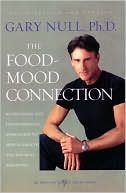The email sent will contain a link to this article, the article title, and an article excerpt (if available). For security reasons, your IP address will also be included in the sent email.
http://www.opednews.com/articles/Tea-Party-Gets-the-Constit-by-Robert-Parry-110918-925.html
September 18, 2011
By Robert Parry
It is now an article of faith in the Tea Party and on the American Right that the Founders wrote the U.S. Constitution to restrict the power of the federal government and protect states' rights. But that analysis is simply wrong.
Like any government document, the Constitution can only be understood in the context of what it replaced -- and why. The Constitution superseded the Articles of Confederation, which guided the new country starting in 1777. The Articles granted broad authority to the states with only a weak national government.
As the Revolutionary War wore on and during the early years of peace, many American leaders -- including George Washington, John Adams, James Madison, Alexander Hamilton and Thomas Jefferson -- came to view the Articles as unworkable and a threat to the survival of the new nation.
The Continental Army was especially disdainful of the Articles because they didn't grant taxing authority to the national government and thus -- when the states reneged on promised funding, which they did frequently -- soldiers were left without pay and munitions.
The answer to this political crisis took shape in 1786 with a growing movement for a much stronger federal government, leading to secret meetings in Philadelphia in 1787 to draft a new governing document, the Constitution.
The Constitution created the framework for a powerful federal authority that could not only declare war and negotiate treaties, but could tax, print money, regulate interstate commerce and undertake a host of other governing activities.
Besides the sweeping federal authority delineated by the Constitution, the document also dropped key language from the Articles of Confederation that had suggested the supremacy of the states.
The Articles had described the United States not as a government or even a nation, but as "a firm league of friendship" among the states "for their common defense, the security of their liberties, and their mutual and general welfare."










 Return to Article
Return to Article